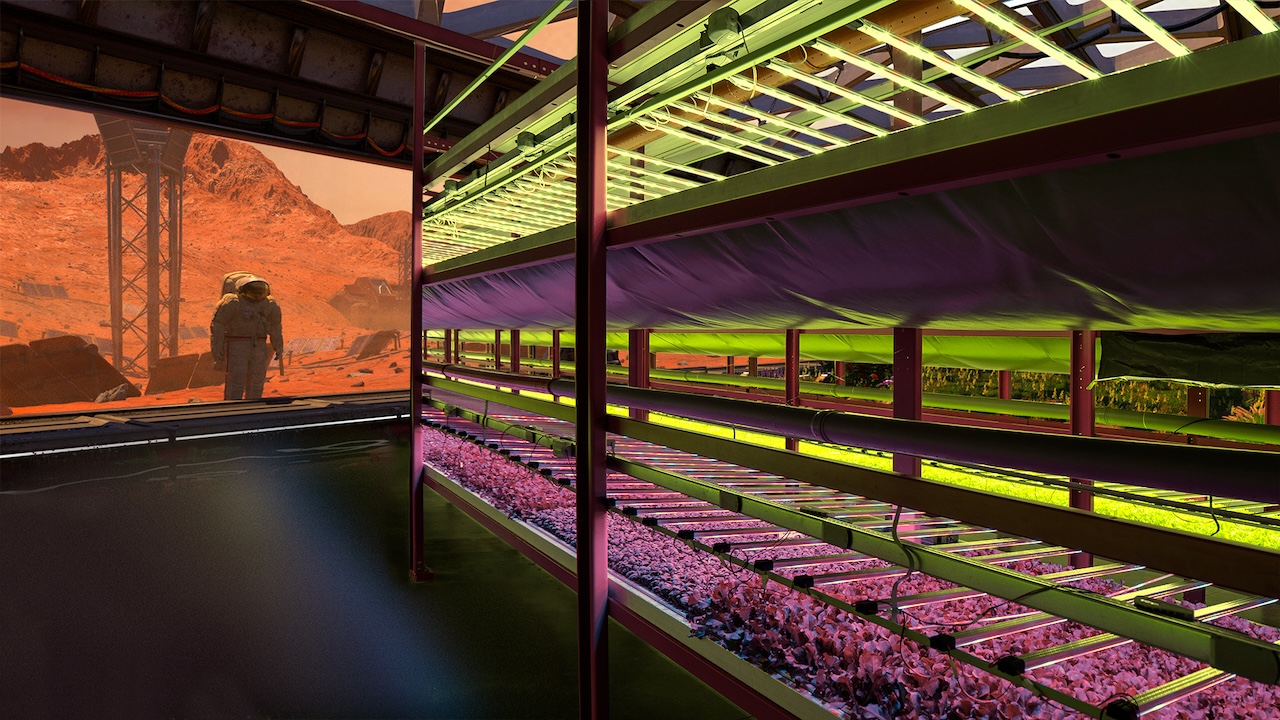Space V is a startup between Genoa and Turin, a spin-off of the Department of Mechanical, Energy, Management and Transportation Engineering (DIME) of the School of Engineering in Genoa, and aims to bring its skills and expertise to the space economy, focusing in the area of research for the production of fresh plant food in space enabling astronauts to grow plants in orbital stations and future lunar and Martian settlements.
Led by Franco Malerba, Italy’s first astronaut as well as an engineer and former manager of Thales Alenia Space, Space V recently raised pre-seed funding from the Galaxia fund, the National Technology Transfer Pole for the development of new companies dedicated to the aerospace sector, created by CDP Venture Capital in partnership with Obloo Ventures. The startup is now working on a subsequent funding round through the involvement of venture capital funds.
Space V operates in an interdisciplinary field in which biology and robotics collaborate to create innovative solutions. Its goal is to design and develop equipment suitable for growing plants in space, opening new vistas for agronomic research essential for the future of space exploration. In the short term, Space V aims to develop and test an adaptive greenhouse in Earth orbit, on the International Space Station and on commercial space stations that will be active in the coming years.
Founded in 2021, Space V has quickly gained recognition in the space industry. In 2022, it was selected as one of the first Italian startups hosted at the ESA BIC (Business Incubation Center), opened by ESA within the I3P incubator of the Politecnico di Torino. This partnership has provided Space V with access to the Piedmont Region’s technology ecosystem, a globally recognized place of excellence in space technologies, thanks to the presence of Thales Alenia Space and the chain of SMEs dedicated to space.
“We know the limitations of astronauts’ food on yesterday’s and today’s missions: food always supplied from the ground, dehydrated to last a long time, lacking in key fresh vitamins that would be very useful for astronauts’ well-being; a menu that is also unbecoming for the likely space tourism clientele. For far-flung missions, for inhabited stations on the Moon, which we will see as early as the decade of the 1920s, and then for trips to Mars, it no longer makes sense to transport all the food from Earth; if anything, it is necessary to bring seeds and gradually grow the plants most useful for the astronauts’ nutrition in special space greenhouses,” says Franco Malerba, founder of Space V. . The Space V’s contribution is precisely the idea of an adaptive multi-story greenhouse, ideal for space, capable of very high yields, versatile in that it can grow several plant species simultaneously, sober in energy consumption, and as autonomous and intelligent as possible. Our goal is the development of a technological greenhouse, capable of realizing “agriculture in space” optimally despite the fact that the space environment is very complex and difficult. The welfare, perhaps even the survival, of astronauts on future space missions depends on it. The performance of the adaptive greenhouse we have patented in terms of yield, flexibility and energy consumption is such that our greenhouse is a candidate for the industry standard of reference in this field.”
In addition to Franco Malerba, Space V’s organizational chart includes Michele Angelo Malerba as CEO; engineers Marco Ghio, research and development manager, and Alexandro Regoli, commercial manager; and scientist Patrizia Bagnerini, associate professor at the University of Genoa. In addition, the company can benefit from the scientific collaboration of Mauro Gaggero, a senior researcher at the CNR.
The root innovation of Space V is the adaptive mechanism that adapts the available volume for each plant to its growth level. By doing so, it is able to fully utilize the available volume because there are never unused volumes as in fixed-shelf greenhouses; by properly scheduling planting, harvesting and plant selection, it is possible to reduce energy and water consumption to the bare minimum.
Space V’s adaptive greenhouse can be equipped with a separate micro-conditioning system for each level of cultivation, allowing different types of plants to grow simultaneously at optimal temperatures and humidity rates while reducing energy consumption. On a terrestrial prototype of Space V’s AVF greenhouse, the University of Genoa conducted a study that showed an increase in production yield of up to 135 percent over standard vertical greenhouses* and a reduction in energy consumption of 43 percent.
Space V’s innovation in the field of growing plants in space could also make a contribution to the sustainability of food on Earth by allowing vegetables to be grown inside living solutions in isolated or difficult environments while avoiding excessive soil consumption and water waste.
ALL RIGHTS RESERVED ©
